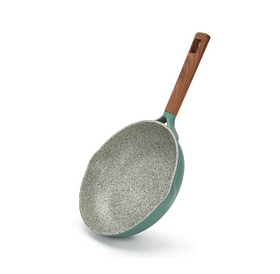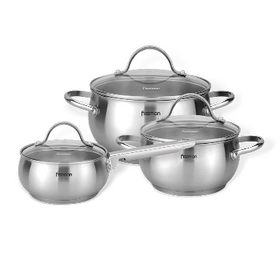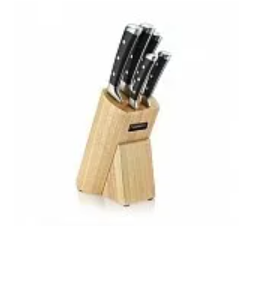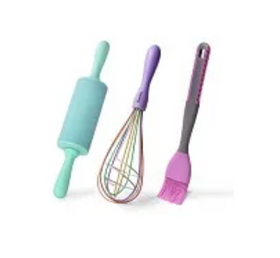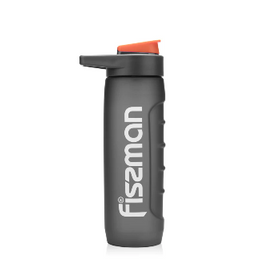What is an stovetop espresso maker ?
The stovetop espresso maker is a light coffee pot for the home cooker. It can be used to prepare a drink on gas and electric hobs. Its external shape is similar to a small cylindrical kettle. No speciality coffee pods are used, as in automatic machines. Just natural ground coffee and water. Under steam pressure, water rises from the lower compartment of the coffee pot to the upper compartment, brewing the coffee.
Benefits of an stovetop espresso maker
You'd be surprised, but a coffee pot of this type hasn't lost its popularity, despite the growth of the specialist home appliance market. True coffee aficionados will confirm, no automatic machine delivers a drink of comparable taste. It has lots of advantages.
- Easy handling. You don't have to measure out the exact amount of water or coffee. The coffee pot is already pre-programmed with the optimum settings.
- Comfortable Construction. Intuitive and does not require constant supervision, in contrast to a pressure cooker or a roaster.
- Good filtering system. There are no grounds in the brew as the water passes through the filter. You can pour it into a cup and drink it.
- Compactness. The coffee pot is small, with an elongated shape, and does not take up much space in the cupboard or dishwasher.
- High quality. Safe components - stainless steel, aluminium, non-flammable plastic etc. - are used.
- Optimal price. The product is very durable, but not expensive.
- Modern design. Producers keep a recognizable look of their coffee pot, as well as use heat-resistant elements.
The history of the product
Although the first designs appeared in France, the official homeland of the device is considered to be Italy. It was there that the industrialist Alfonso Bialetti took out a patent for it in 1933. La moka was the name of a small coffee pot. And the first serial model was called Moka Express. The design remained intact. A tall octagonal teapot with a convenient handle and a neat spout. Previously it was made entirely of aluminium, but now other materials are used. The moka became popular after World War II. Today, the stovetop espresso maker is listed in the Guinness Book of World Records as the most famous coffee pot on the planet. 90% of Italian families prepare their favourite drink only with it.
Design
An stovetop espresso maker consists of four elements. We will consider them, like a pyramid, from the bottom up.
1: The water tank. Its volume is indicated on the packaging as a limit. It is non-transparent, made of metal and has a flat bottom.
- Pressure valve. Convex on the outside of the casing. This is an emergency fuse, above which no water can be poured.
- Coffee strainer. In modern models there is a perforated metal insert. The coffee grounds are poured into the strainer.
- The beverage tier. Boiling water flows through the strainer and into this compartment. It has a spout, a handle and is covered with a lid.
The top and bottom are screwed together. It can be assembled and disassembled in less than a minute. Once disassembled, it can be washed in the dishwasher or by hand.
Espresso coffee maker: How it works
Don't be daunted by the abundance of parts. They are assembled like a construction set. First, water is poured into the bottom of the product. Each model is designed for a certain number of servings of drink, that is, for a specific volume of liquid. For convenience, there is a maximum marking on the inside of the body.
Next, a coffee strainer is inserted into the neck of the water compartment. In professional circles, it is called a strainer for an stovetop espresso maker . The strainer is filled to the top, and lightly tamped for a richer taste.
The stovetop espresso maker works based on steam pressure. As it boils, the water turns into it. It pushes the remaining liquid up through a metal tube. It passes through the filter, brewing the aromatic coffee.
Espresso coffee maker: which one to buy?
- The stovetop espresso maker is made of aluminium. The benchmark for this type of coffee pot. The models made in Italy in the first third of the last century were made of aluminium. It is a lightweight, mechanically strong metal. The surface is smooth, with a pleasing matt texture.
- A stainless steel stovetop espresso maker . A modern device that is respected for its beautiful metallic lustre. The material is highly heat-resistant (melting point above 1000 degrees). A little heavier than aluminium, but more resistant. Not afraid of contact with water, including in the dishwasher.
Some models combine a metal water tank with a coffee pot made of heat-resistant glass. This is more of a design statement than a practical necessity. You can watch the brewing process through the glass.
By volume (based on 50-100 ml servings):
- For 2 cups. 100-200 ml.
- For 4 cups. 200-400 ml.
- 6 cups. 300-600 ml.
- For 9 cups. 450-900 ml.
The stovetop espresso maker: how to choose?
First, calculate the volume.
Next, pay attention to the materials. Remember that stainless steel perfectly withstands frequent contact with water. It won't darken, tarnish or develop an oxide-like coating. It is an option for dishwashers. Aluminium stovetop espresso maker s are recommended to be cleaned by hand. Aggressive cleaning agents are no good for it.
Make sure the base of the product is compatible with the type of hob. All models work on gas hobs, but only those with a ferromagnetic disc are suitable for induction hobs. You will find a marking on the packaging.
Study the details carefully. The handle on the body and lid of the pot must be made from heat-resistant material. Bakelite, for example. It does not get hot when you use it, does not produce a specific plastic smell, and does not melt.
Finally, estimate the cost. Inexpensive stovetop espresso maker s do not last long. Most often, the manufacturer saves on the quality of components. You can also find overpriced coffeemakers. Usually it is a designer's model with colour or glass body. Beautiful, but not functional. Stick to the middle price segment.
A stovetop espresso maker, how to use it.
Moving on to the most important question: how to brew coffee in an stovetop espresso maker ?
Among the connoisseurs of the drink there are still debates about the ideal ratio of coffee mixture and liquid. Some people think that for every 100 ml of water, you need exactly 10 grams of grind. Others do not count the grams.
Both approaches are valid. However, there are points to consider in either case. Give preference to a medium to coarse grind. The coarser it is, the less you trample the dry coffee. Otherwise, the steam and water will not rise.
Hot water added to the coffee pot will make the beverage faster. However, the extraction (brewing) time will be shorter. The coffee will not have time to develop all the taste and aroma. Allow the liquid to heat up and come to the boil directly in the pot. Put it on a low heat/heat setting. It will not overheat and the drink will be thicker, more intense. On the gas hob, select the smallest burner.
When the water rises from the lower receptacle to the upper one, you'll hear a hiss. This means the coffee is ready. Without removing the lid, turn off the heat, remove the coffee pot from the cooker, and pour the beverage into cups.
The important thing is:
- Arabica is the right kind of coffee for the stovetop espresso maker .
- Keep the water level below the safety valve.
- Use filtered water. This tastes better and richer.
- Do not use a Turkish coffee grinder. The grind is too fine.
How to care for an stovetop espresso maker
The best coffeemakers are made to last. A coffee pot like this will easily last you five years or more. Just make sure you take care of it regularly.
- Clean your coffee maker after each use. Let it down completely. This protects your hands from being burnt. Avoid temperature shock of the materials.
- Keep an eye on the condition of the parts. The rubber/plastic/silicone parts wear out the fastest. This leads to deterioration and malfunctions.
- Pay particular attention to the filter when washing the machine. Poor cleaning will result in the perforated holes becoming blocked by coffee grind or limescale.
- Use mild detergent and as a precaution, use baking soda. This will remove food impurities. Boil steel containers occasionally with a citric acid solution.
- Do not rub the walls of the coffee pot with abrasive powders or rough brushes. These will damage the casing and also wash away the natural oxidation protection based on the coffee oils. This is especially important for aluminium models.
FISSMAN products
We love coffee as much as you do. That's why we're always on the lookout for ways to make your morning cup of joe even better. With each new collection of crockery and kitchen accessories FISSMAN strives to support your favorite cooking rituals as well as your favorite drinks. This is why the brand's line of stovetop espresso maker is regularly updated with fresh models.
Our new stovetop espresso maker has been designed by our talented team in order to provide you with an efficient and pleasant experience when making coffee at home.
